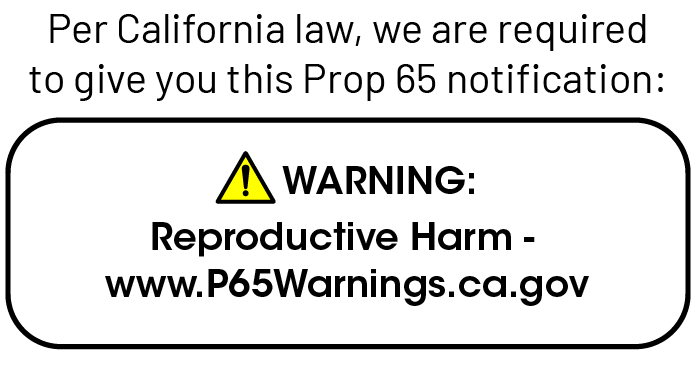A Healthy Way to Even Skin Tone
Posted by Dr. Hannah Sivak with Brendan Leonard on May 18th 2021
What causes uneven skin?
Life does.
From the day we are born, our body accumulates changes and scars as we grow up and grow old, but nothing is as visible as this scar or that sunspot on our face.
Our skin changes color in response to the sun, the environment, and stress in general, even the products we apply to our skin.
Skin pigmentation is a very complex process that involves different types of cells that originate in different parts of the embryo, several biochemical reactions, and transport across the cell and between cells. With so many interconnected processes, it is not surprising that things can go wrong.
Types of Uneven Skin
This is a very complicated and detailed subject, but in just a couple of sentences here is a high-level view of what can go wrong:
Most cases of uneven pigmentation have to do with melanin: too much, too little, or the wrong color. A few have to do with other colored substances, including those derived from blood.
What causes dark spots, a.k.a. sun spots, liver spots, age spots? Mostly, UV radiation. But that said, you can also get them from strong oxidants, burns, freeze burns, and other deep skin damage.
So let’s look at the types of uneven skin pigmentation:
Sunspots (age spots, senile spots) - Light brown, red, or dark brown in color and located in areas most often exposed to the sun such as the hands, face, shoulders, arms and forehead, and the scalp if exposedto direct sunlight.
Melasma (chloasma) - Dark or tan skin discoloration more common in women, especially pregnant women. Genetics, visible light, UV, and hormonal changes can contribute to this condition. Dermal-epidermal interactions increase and the disrupted signaling between melanocytes and other skin cells may cause melasma lesions.
Chemical toxicity - Some plants, like lime, lemon, celery, and many others, contain furocoumarins that absorb UV radiation. If you apply a product that contains this chemical to your skin, a chemical chain reaction will start that can severely damage the skin. Hyperpigmentation is one of the long-term effects.
Vitiligo - Vitiligo is a condition that causes loss of pigmentation of sections of skin, and it shows as white splotches on the surrounding darker skin. The causes of vitiligo are not well understood, but autoimmune mechanisms, oxidative stress, and viruses may contribute. At present, there are no effective treatments for vitiligo.
Post-inflammatory pigmentation. Acne sufferers are familiar with this problem, in which acne lesions are followed after a while by reddish to brown pigmentation areas.
Some “home remedies” tried by melasma sufferers may also cause hyperpigmentation because heat, laser applications, and peels all lead to stress and inflammation. Remember to talk to your doctor if you are considering doing something extreme! Your dermatologist knows your skin better than YouTube.
Products That Help Uneven Skin
There are lots of active ingredients that can help you balance out your skin tone in a healthy, manageable way. And guess what? Skin Actives formulates with them in a wide variety of products.
Of particular note, our Advanced Ageless line of products with ROS* BioNet™ and Apocynin will help maintain the dermal-epidermal junction. Apocynin promotes the synthesis of chemicals crucial for the anchoring of newly formed stem cells, with the end goal of delaying aging, and promoting overall skin health.
Outside of Advanced Ageless, here are some of our other favorite for addressing uneven skin tone:
Sunscreen - Just when you thought we were tired of ringing this bell, it turns out we weren’t! Sunscreen is the absolute most basic thing that you can do for your skin health. And yet, it’s a thing we sometimes find so hard to do. Whether you are using our Anti-Aging Day Cream with SPF 30, or our Advanced Protection SPF 30 Sunscreen, every day should begin with protecting your skin from the rays of the sun.
Skin Brightening Cream - Harsh bleaching can cause more problems than the uneven skin tone you are trying to correct. Skin Brightening Cream uses vitamins, minerals and nutrients to help your body reduce melanin spots as the skin renews.
UV Repair Cream - If overexposure to Ultraviolet radiation can lead to uneven skin tone, then look to the cream designed to repair skin deeply damaged by the sun. UV Repair Cream antioxidants address uneven tone, spots, and inflammation as well as providing skin nutrition for anti-aging benefit.
Capillary Health Cream - When you bruise your skin, you will see many colors. Bilirubin, the yellow degradation product of hemoglobin that you see in the bruises, is a pigment that contributes to skin color. The complete degradation sequence of hemoglobin includes the pigments biliverdin, bilirubin, and hemosiderin. Use Capillary Health Cream to help reduce the unsightly appearance of bruises, varicose veins and spider veins.
But whatever products you choose to use, please remember that fast and furious chemicals like hydroquinone could make things worse, especially for darker skin
Claims on this page have not been evaluated by the FDA and are not intended to diagnose, cure, treat or prevent any disease.

